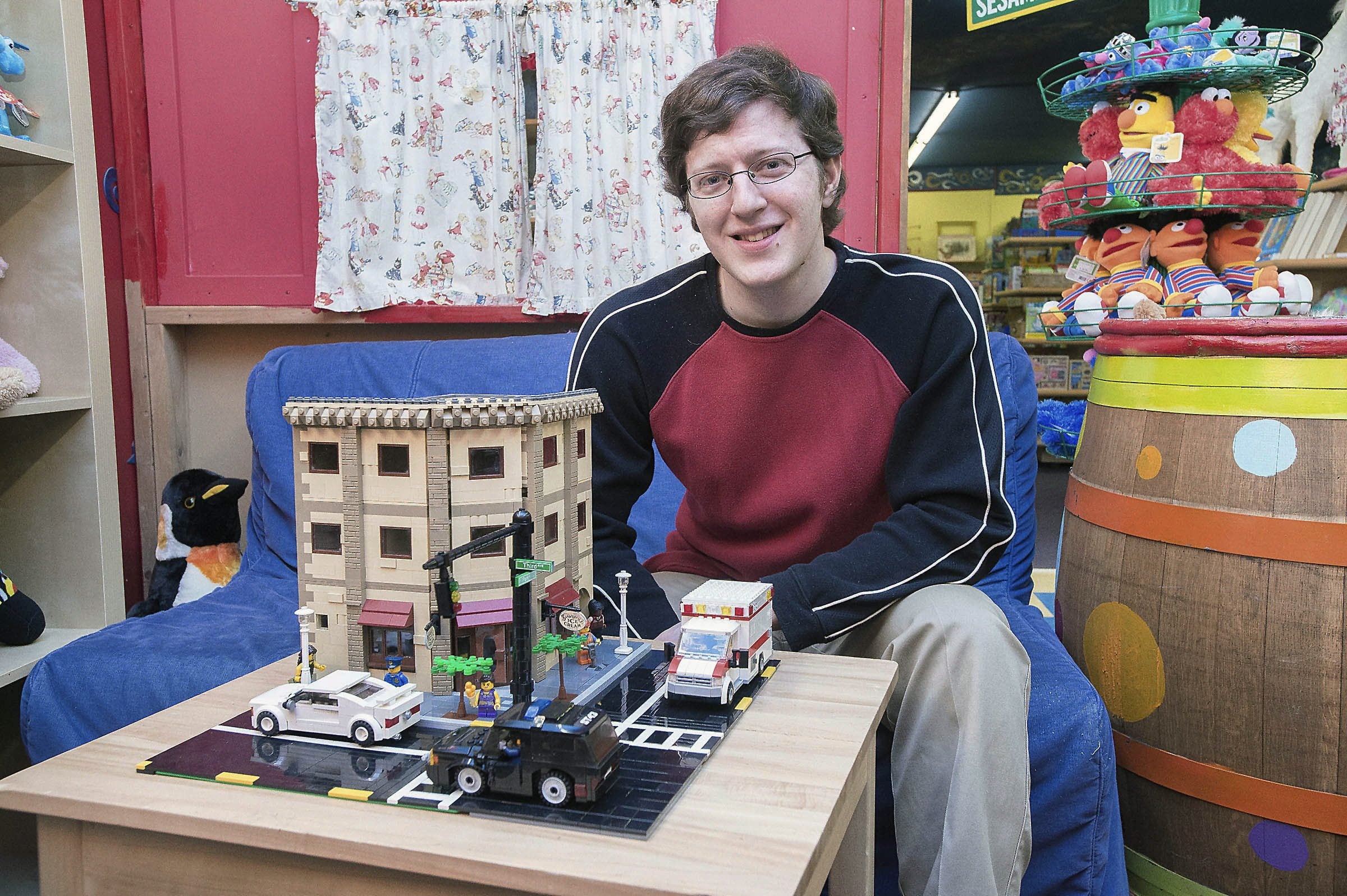McMINNVILLE, Ore. — No, Kevin Wanner definitely did not use glue to hold together his Lego replica of downtown McMinnville’s Serendipity Ice Cream. “People who do Legos consider that the great sin,” he said.
It’s an honest question, though, as the replica is extremely intricate and looks extraordinarily fragile. After all, it’s an entire downtown building — albeit a miniature one — secured by nothing more than teeny-tiny interlocking plastic “bricks.” Yes, the kind children scatter about the floor to make their barefoot parents scream in pain.
Wanner is no child. At 29, he is part of a growing legion of grown-ups who call themselves AFOLs — Adult Fans of Legos.
Hundreds of them gathered in Portland Feb. 27-28 for Bricks Cascade 2016, a celebration of Legos as art. And Wanner was among them.
He was fresh off his victory in the adult category at Hopscotch Toys & Games’ annual Lego competition. His “Serendipity” went up against entries such as Steve Peterson’s “Starship Explorer,” Michelle Peterson’s “Pirate Attack” and Chani McCullough’s second-place “Game with Goldilocks.”
Linda Hays, the owner of Hopscotch, said they were all wonderful. But she said Wanner’s miniature building was mind-blowing. Every detail was there, from an exact replica of Serendipity’s sign to tiny tubs of ice cream to the store’s player piano.
“The only thing custom-made is the sign for the ice cream parlor,” Wanner said. “I wanted it to be all Lego. Part of the challenge and the fun is figuring out how to produce something using only Lego bricks.”
Wanner’s father, Ed, is the vocational division manager at MV Advancements. And the nonprofit agency, which helps people with development disabilities achieve independence, owns and operates the ice cream parlor.
“My dad’s been asking me for a long time to do a Lego version of the building,” Kevin Wanner said. “It was really hard to keep him from discovering what I was doing, but I wanted it to be a surprise.”
He worked as privately as he could in his room, he said. It would be hard to notice one more Lego project in that space, he added.
“My room is only so big,” Wanner said. “I do most of my work on the floor, but it’s true that I am seriously running out of places for Legos.”
The only thing that might have given Wanner’s secret project away was various photos of the building. They were the only reference Wanner used. There were no detailed blueprints or measurements. Everything was done by eyeballing the photographs and the building itself, he said.
His Serendipity building, which took a week and a half to build, fits neatly into a larger cityscape. The rest of the buildings bear little or no resemblance to Third Street in McMinnville. “They’re just buildings out of my imagination, but they still fit the general architectural style of Serendipity,” Wanner said.
Some elements he couldn’t replicate. The upper floors of the building are shut off, and very few people go up there. Wanner’s model comes apart to reveal rooms in the upper floor, but the exact layout of those rooms was left to his imagination.
“All I knew was that the building used to be a hotel, so I just did the best I could at guessing what the rooms would look like,” he said.
Creating a model from something in real life is new for Wanner.
“I usually do things from a variety of movies and video games,” he said. Among his other creations is a cut-away replica of a church featured in the video game “Final Fantasy VII” — right down to the stained glass windows.
He also makes a lot of replicas from “Star Wars” and “The Lord of the Rings.” He treats fantasy models with the same attention to detail he gave the cartons of ice cream in the Serendipity replica.
“I try to make them as accurate to the movie as possible,” Wanner said. “I make a grid and creates patterns that are to scale.
“That often doesn’t happen with the children’s kits based on movies. When they’re making them for kids, they’re going for sturdy.”
Among the creations he took to Portland was the “Black Gate” or “Morannon” from “The Lord of the Rings.” The structure is massive — 7 feet long with three sections and tall spires.
The spires are supposed to be round, but that can be quite a trick when using Lego bricks. The spheres on the bridge have 16 sides, giving them the illusion of being round.
While Legos may seem an intricate part of Americana, they’re actually Danish. They were created by a carpenter named Ole Kirk Christiansen, who began making wooden toys in 1932.
He changed the name to Lego in 1934, after the Danish phrase “leg godt” meaning “play well.”
The company expanded after World War II to the production of plastic toys. The interlocking bricks now synonymous with the company debuted in 1949.
Orignally known as “Lego Automatic Binding Bricks,” they were based in part on “Kiddicraft Self-Locking Bricks,” patented in England in 1939 and released in 1947.
What started off as a child’s toy has become a hobby, even an obsession, for people of all ages. A wide variety of them come to exhibitions like the event in Portland.
“Some are people who picked up Legos as adults,” Wanner said. “Others are honestly kids who just never got tired of playing with Legos.
“I guess that would be me. I can’t even remember when I started playing with Legos. I must have been 4 or 5. Maybe I got my first set as a birthday present. I can’t even remember. However, I’ve been building with Legos ever since.”



